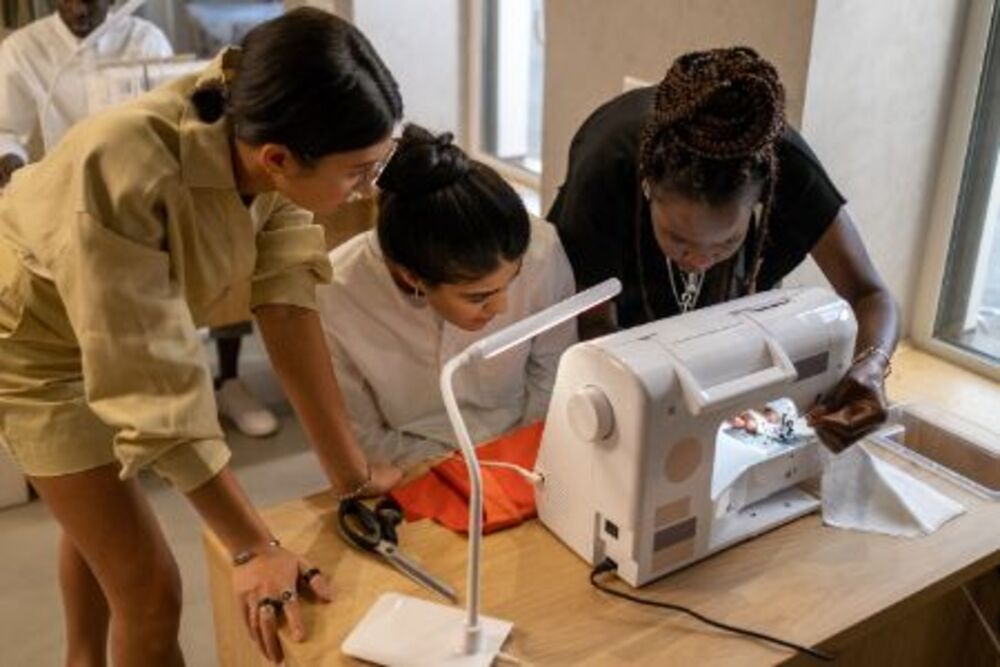Sewing machines are fast, precise tools that produce fabric stitches at an impressively fast rate compared to hand sewing. Their needle pierces the thread before interlocking it via an arm-carried shuttle shuttle shuttle shuttle shuttle shuttle arm arm arm shuttle arm shuttle arm shuttle arm arm arm arm arm shuttle arm
Many sewing machines feature preloaded stitch patterns that you can access by pressing buttons. You may also create and program custom stitches.
Threading
Threading the needle may seem straightforward, but it can become complex when done incorrectly. It’s essential that the appropriate thread is chosen for each fabric type.
As first step, secure a full spool of thread with its pin. A spool cap or felt may also help prevent tangling. Find out the best embroidery machine for beginners.
Loading the Bobbin
A bobbin holds the thread used for underside stitching. Modern bobbins may be made from plastic or metal and either drop in, or fit into a compartment under the needle plate (front loading).
If the thread on your bobbin seems to gather on the underside of your project, this could be caused by uneven winding on its shaft. Refer to your sewing machine manual for guidance in winding it correctly; additionally use quality thread labeled for your specific machine to avoid problems.
Stitching
Sewing machines can be useful in creating various projects. Computerized sewing machines feature numerous stitch patterns.
Straight stitching is an economical, reliable, and durable method used for sewing garments or stuffing animals closed. A straight stitch can also create strong edges between seams and single layers of fabric, providing strong construction in seams or single layers of fabric.
Sergers are machines designed to trim threads while producing neat edges at once, helping prevent fraying and creating neat seams on fabrics that stretch. They’re especially handy for hemming seams on stretch fabrics.
Threading the Needle
Sewing machines offer a wealth of stitches, but to be truly effective it’s essential that threading the needle properly before beginning is essential for beginners as tangled thread can quickly break or knot under pressure from a machine that’s unsecurely threaded.
Needle threaders can make threading much simpler. Their thin wire “eye” expands to fit the eye of any needle. Some experts also advise applying some beeswax onto one end of your thread to stiffen and facilitate passage through its eye.
Threading the Spool
Thread should be secured to the upper thread pin by loading or fully unloading a full or fully-loaded spool on it and using any available spool caps on your machine to secure it if needed.
Thread spools can either be cross-wound or stacked for optimal use. Please follow your machine manual’s directions on how to mount each type of spool correctly. Some machines also feature an additional thread guide above the first, such as a button or disc that the thread must go under or between.
Threading the Spool Pin
There are multiple methods of mounting thread spools onto a sewing machine: you can either use its built-in vertical spool pin, or purchase a free-standing thread stand compatible with multiple thread spools.
When using a stacked thread spool, be sure to place a foam pad beneath it as this will prevent the thread spool from catching on your pins and unravelling during use. When your thread is ready, wind it on to an empty bobbin; this part is often the longest process when threading a sewing machine.
Threading the Needle Plate
The needle plate is a metal plate that sits below both needle and presser foot. It contains a small hole through which thread travels to make stitches, as well as grooves that mark seam allowances and straight lines.
Before removing the needle plate from your machine, first unplug your machine in order to work without risk of electric shock. Next, remove both presser foot and needle holder for easier access to bobbin and needle.
Threading the Bobbin
A bobbin is housed within a metal case that snaps to the front of your machine, with thread passing through its inner core to be collected by its needle. Each machine may require different methods for threading the bobbin so be sure to follow your manual as best as you can when threading your own.
Bobbin thread is essential to creating strong sewing machine stitches, and must match up properly with upper thread to do so. Improper winding of bobbins can lead to many issues during sewing; be sure to have spares handy just in case!

